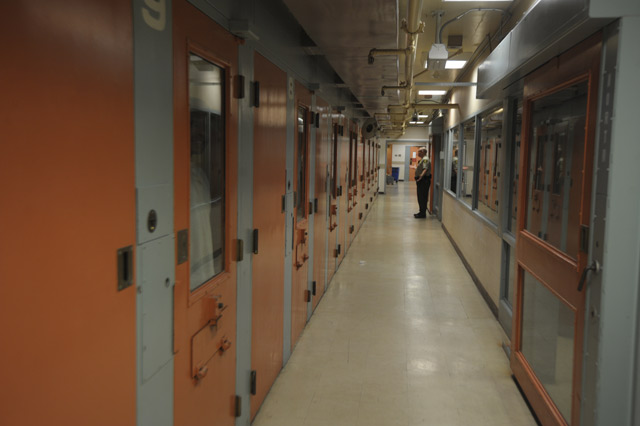Opioid OD Hits 20 at County Jail
Inmates and Custody Deputies Treated at Cottage Emergency Rooms

The emergency rooms at Cottage Health’s downtown and Goleta hospitals were flooded Thursday evening by a tsunami of inmates and custody officers in the throes of real or possible opioid intoxication and overdose. By the time the dust settled, no fewer than 15 inmates had been screened for possible opioid intoxication and potential overdose. They also were given Narcan, a drug designed to kill the buzz and prevent an OD. In addition, five custody deputies were treated as well. Initially, it was suspected an inmate had smuggled fentanyl into the jail, stashing it in his rectum. The belief was that the custody deputies were exposed when the drug became airborne. But jail administrator Vince Wasilewski stated that fentayl has not been identified as the toxin yet and that no fentanyl has been found. By contrast, he said “a significant quantity” of tar heroin was found in a subsequent search.
How much? “Let’s just say more than personal use,” Wasilewski said. One inmate appeared to have taken enough to be seriously intoxicated. Whether he would have overdosed without intervention, Wasilewski could not say. He speculated that the inmates would have ingested the heroin by shooting up. But no syringe, he added, turned up in the subsequent search.
If tar heroin were involved, it remains unclear how the deputies would have been affected by ambient exposure. Wasilewski clarified that while the deputies were exhibiting symptoms consistent with exposure — light-headedness and accelerated heart rates — it’s not certain yet that they were directly exposed. Blood tests will ultimately determine if they were. Inmates smuggling drugs into county jails is a commonplace occurrence, but Wasilewski said he’s never seen anything like this during the four years he’s been in charge of the Santa Barbara jail. He then added, “It’s just another case of the opioid epidemic in our community and in our country.” No charges have yet been filed against any specific inmates for having smuggled the drugs into the jail, but Wasilewski added they had “a person of interest.”
Wasilewski said this week’s incident highlights the need for better screening technology for inmates admitted to the County Jail. Currently, they are strip-searched upon entry. Cavity searches are undertaken on occasion, but require a search warrant based on probable cause. Wasilewski said side-angle X-ray machines — akin to the ones used on passengers prior to boarding airplanes — would detect drugs smuggled via body cavity. “But it costs a pretty penny,” he cautioned, “$150,000 to $200,000.” Then there are operating and maintenance costs.
The timing of this week’s event was perversely perfect. Saturday — August 31 — is International Opioid Awareness day. The county’s Public Health department observed the occasion by releasing data indicating Santa Barbara has a higher rate of non-fatal emergency visits for opioid overdoses than the state-wide average. In 2018, county-wide emergency rooms reported 648 non-fatal visits. That’s 55 percent higher than it was in 2010. Drug fatalities for 2018 were 69. Of those half were opioid related. Fentanyl is playing a growing role in such fatalities. In 2018, nearly 30 percent of all opioid deaths involved fentanyl. In 2015, it was just 9 percent.
Between 2014 and 2018, Santa Barbara County recorded 376 drug and alcohol deaths. Of those, two thirds were accidental. Of those, 133 involved fentanyl.



